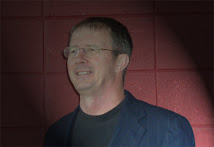In 1983, Anderson provided a fuller description of the ACT and developed a theory called ACT*. This, in turn, evolved into the ACT-R (Atomic Components of Thought) theory (1993), in which an architecture of cognition is modeled to explain how the process of acquisition can be tuned to the statistical structure of the environment.
Defining
Declarative knowledge is further divided into:
- Episodic knowledge: memory for "episodes" (eg., the context of where, when, who with etc); usually measured by accuracy measures, has autobiographical reference.
- Semantic knowledge: Memory for knowledge of the world, facts, meaning of words, etc. (eg., knowing that the first month of the year is April (alphabetically) but January (chronologically).
Procedural Overlap
The trouble with this approach is that experts use "declarative knowledge" when problem solving -- proposition models in which highly complex schemata are built from:
- Plans (simple): How goals, which are distinguished by an artifact are related to time and space.
- Concepts (simple): The representation of a class of objects, events, or other entities by their characteristic feature or mental image.
- Principles (simple): How one change is related to another change
- Causal Network (complex): A combination of principles and concepts that are linked to each other with cause and effect and/or natural-process relationships.
- Goal-Plan Hierarchies (complex): Goal and/or plan structures that are linked to each other with non-arbitrary relationships.
- Conceptional model (complex): Concepts that are linked to each other with non-arbitrary relationships, such as a concept map.
And the main reasons are simply resources and expectations. In college, it is downright difficult, if not impossible, to train complex cognitive skills in a semester; yet look what most problem solving courses in the corporate training world are -- a couple of hours, eight hours top. And then we expect the learners to transfer what they have learned in the classroom to the job. Yet, all they have are a very few simple if/then statements to take back to the job. Such training is totally inadequate.
Part of the problem is that we too often view the training process as "cybernetic" -- a communication theory that treats organisms and organizations as being very much alike in that both display "behavior." And we expect this cybernetic training process to "behave" in such a way that it steers us to a desired destination by treating "ways of behaving." Now this would not be too bad except for one minor point...we look for no feedback. Thus we steer this training ship of ours towards a destination, yet on the way we take no compass or sextant readings. We simple do not where we are at any point during our trip, yet we expect this cybernetic organization of ours to get us to where we are going.
And the reason we blindly steer this ship of ours is that our expectation is not a "result" that will fix or improve a process, but rather a "completion" that tells us we have finished a specific cycle of training. Thus what we should be doing is looking for results and taking measurements along the way to ensure we are indeed getting the result or impact that we desire; rather than simply performing training for the sake of doing it.
Notes
Reference
Merrienboer, Jeroen (1997). Training Complex Cognitive Skills: A Four-Component Instructional Design Model for Technical Training. Englewood Cliffs, NJ: Educational Technology Publications.
Newell, A. (1972). Human Problem Solving. Englewood Cliffs, NJ: Prentice-Hall.


Tidak ada komentar:
Posting Komentar